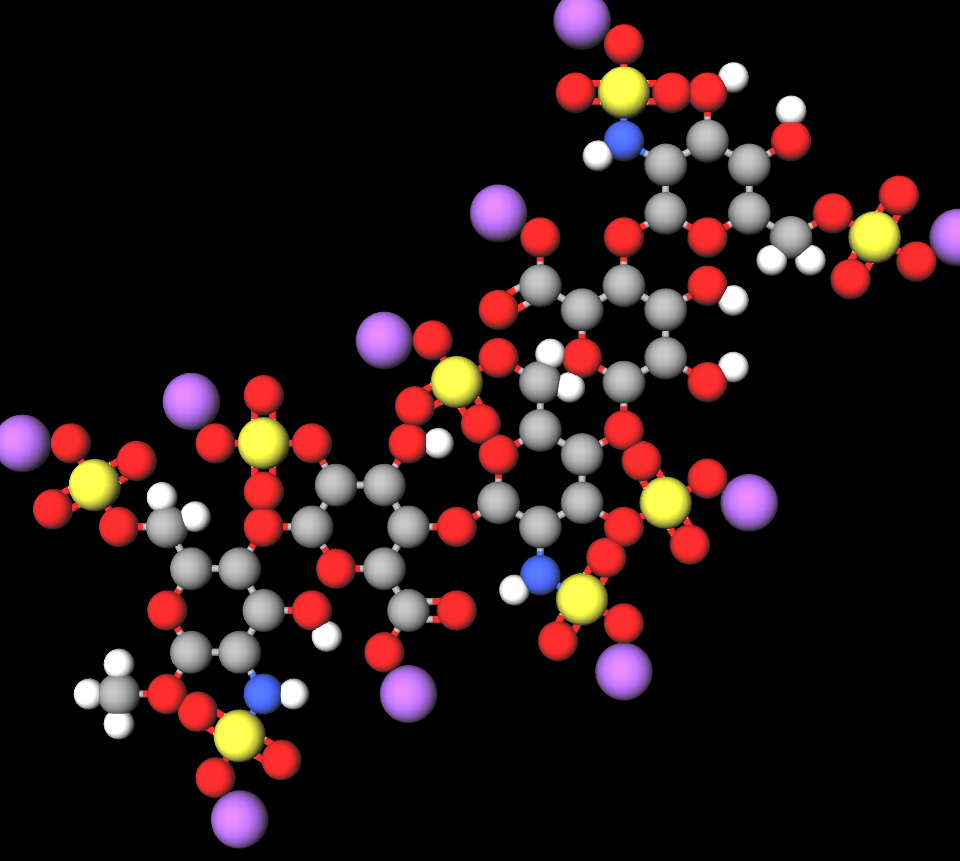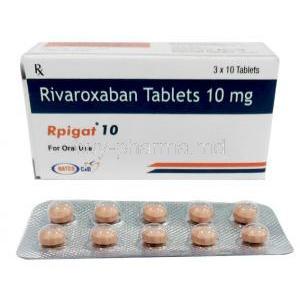Arixtra PF Ingection
- I. Introduction to Arixtra PF Injection
- II. Composition of Arixtra PF Injection
- III. Uses of Arixtra PF Injection
- IV. Off-Label Uses of Arixtra PF Injection
- V. Fondaparinux mechanism of action
- VI. Fondaparinux doseand Administration of Arixtra PF Injection
- VII. Important Precautions for Using Arixtra PF Injection
- VIII. Warnings and Contraindications
- IX. Administration of Arixtra PF Injection in Special Populations
- Administration to Elderly Patients
- Dosage Considerations for Elderly Individuals
- Monitoring Guidelines to Ensure Safety in Older Adults
- Administration to Pregnant Women and Nursing Mothers
- Risks and Benefits of Arixtra During Pregnancy
- Potential Effects on Nursing Infants and Precautions
- Administration to Children
- Guidelines and Restrictions for Pediatric Use
- Safety Studies and Approved Age Range for Administration
- X. Fondaparinux side effects
- XI. Serious Side Effects and Potential Risks
- XII. Interactions of Arixtra PF Injection with Other Medications
- XIII. Overdosage and Emergency Handling
- XIV. Storage and Handling Precautions
I. Introduction to Arixtra PF Injection
Overview of Arixtra PF Injection
Arixtra PF Injection, a synthetic anticoagulant, is primarily used to prevent blood clot formation in patients at high risk of thromboembolic events. This medication functions as a potent, selective inhibitor of Factor Xa, which plays a crucial role in the coagulation cascade. Its non-heparin-based formulation suits individuals who may react adversely to heparin-based anticoagulants.
Therapeutic Classification and Mechanism of Action
Classified as an antithrombotic, Arixtra PF Injection operates by selectively targeting and inhibiting Factor Xa activity, which interrupts thrombus formation. Unlike other anticoagulants that may act on multiple sites, Arixtra's precision in targeting Factor Xa reduces the likelihood of side effects linked to broader-acting agents.
Key Indications for Arixtra PF Injection
Arixtra is recommended to prevent deep vein thrombosis ( DVT ) and pulmonary embolism ( PE ) in individuals undergoing procedures such as hip and knee replacement surgery. It is also used to treat syndromes and reduce the chances of recurring blood clots in high-risk patients.
II. Composition of Arixtra PF Injection
Active Ingredients and Their Concentrations
Fondaparinux sodium is the key component in Arixtra PF Injection, a man-made pentasaccharide molecule known for its ability to target Factor XA in the body's clotting process. The dosage levels differ depending on patients' treatment needs.

Fondaparinux drug class
Fondaparinux injection belongs to a group of drugs known as factor XA inhibitors.
Inactive Ingredients and Preservative Details
Arixtra PF includes active components in the formula to ensure stability and proper delivery, like sodium chloride. The injection doesn't have preservatives; hence it needs to be stored with care to keep its effectiveness and prevent any contamination risk.
Available Forms and Strengths of Arixtra PF Injection
Arixtra PF Injection comes in filled syringes in different strengths to suit various dosage requirements, from 2 mg to 10 mg formulations.
Fondaparinux vs enoxaparin
Both Fondaparinux and Enoxaparin are anticoagulants commonly prescribed for patients diagnosed with the syndrome (ACS). Compared to Enoxaparin Fondaparinux is generally believed to carry a reduced risk of bleeding.
Fondaparinux vs argatroban
Both Fondaparinux and argatroban are types of anticoagulants that're not heparins and are prescribed to manage heparin induced thrombocytopenia (HIT). They have effectiveness when used to address symptoms. Fondaparinux works by blocking factor Xa activity whereas argatroban hinders reactions catalyzed by thrombin.
III. Uses of Arixtra PF Injection
Primary Uses of Arixtra in Medical Treatments
Arixtra PF is primarily used to mitigate the risk of venous thromboembolism, especially after major orthopedic surgeries. It is essential in preventing and treating blood clots, which can lead to complications like stroke or organ damage.
Role in Prevention and Treatment of Deep Vein Thrombosis (DVT)
Deep vein thrombosis, a potentially life-threatening condition, involves blood clots in deep veins, often in the legs. Arixtra works effectively in both prophylactic and treatment capacities for DVT, especially post-surgery.
Efficacy in Treating Pulmonary Embolism (PE)
Pulmonary embolism occurs when a blood clot blocks a pulmonary artery, impairing oxygen supply to the lungs. Arixtra's selective Factor Xa inhibition makes it highly effective in PE management by preventing new clots from forming.
Other Conditions Arixtra is Used for in Blood Clot Prevention
Besides DVT and PE, Arixtra is utilized in other clot-prevention contexts, including in patients with unstable angina or certain post-operative scenarios where clot formation is a significant risk.

IV. Off-Label Uses of Arixtra PF Injection
Overview of Off-Label Use Practices
Off-label use involves prescribing a drug outside its approved indications. While not officially approved for certain conditions, Arixtra has demonstrated efficacy in other clinical scenarios where clot prevention is critical.
Potential Off-Label Uses in Cardiovascular Conditions
In cardiovascular health, Arixtra is occasionally prescribed off-label for patients with atypical clotting disorders that standard treatments may not adequately address.
Use in Patients with Heparin-Induced Thrombocytopenia (HIT)
Arixtra is a preferred anticoagulant in cases of heparin-induced thrombocytopenia, a severe complication of heparin therapy, as it does not trigger the same immune response as heparin.
Off-Label Applications in Surgical Procedures to Reduce Clotting Risk
Surgeons might use Arixtra in ways not officially approved for surgeries, such as cardiac or vascular procedures, to reduce the chances of blood clotting after surgery.
V. Fondaparinux mechanism of action
Mechanism of Action: How Arixtra Prevents Blood Clots
Arixtra functions, by attaching to antithrombin III and boosting its ability to inhibit Factor Xа.This blocking process interrupts the cascade of blood coagulation. Stops the creation of thrombin and the formation of clots thereafter.

Role of Antithrombotic Properties
Arixtra serves as a medication by reducing the likelihood of clot formation in the body. It is an option for individuals at risk of blood clot-related incidents due to its targeted approach, which offers improved safety and tolerability compared to more general anticoagulants.
Comparison with Other Anticoagulants and Unique Benefits
Arixtra's unique targeting of Factor XA makes it different from heparin and warfarin since they impact factors simultaneously.This specificity decreases the chance of bleeding and enables its application in patients with sensitivity to medications based on heparin.
VI. Fondaparinux doseand Administration of Arixtra PF Injection
Standard Dosage for DVT and PE Prevention
The typical recommended amount of medication for reducing the risk of DVT and PE after surgery is 2.
Dosage Adjustments for Special Populations
It is important to adjust the dosage for patients with kidney problems to avoid side effects and ensure proper treatment efficacy by prescribing lower doses when necessary.
Administration Methods and Tips for Optimal Efficacy
Arixtra is usually given as an injection in the belly area for results; to maximize its effectiveness, it should be administered at the same time every day.
Injection Sites and Techniques for Administering Arixtra Safely
Be careful not to inject into areas that have bruises or scars, and make sure to switch injection sites to reduce irritation in that area by inserting the needle at a 45-degree angle for administration.
VII. Important Precautions for Using Arixtra PF Injection
Key Considerations Before Starting Treatment with Arixtra
Prior to initiating treatment with the Arixtra medication regimen, it is advised to examine the patient's medical background and pay special attention to any past issues related to kidney function abnormalities, bleeding disorders, or allergies already known. Regular blood tests might be suggested for individuals who are considered at risk of experiencing adverse effects
Necessary Precautions for Patients with Kidney and Liver Disorders
Impaired kidney function can impact how Arixtra is processed in the body. This may increase the chances of experiencing effects from the medication. Patients with moderate to severe renal issues should be careful when using Arixtra and may need to make changes to how they take the medication as required.

Monitoring Requirements During Arixtra Use
Check the blood work of individuals with liver or kidney issues regularly to evaluate clotting levels and ensure treatment results while minimizing risks through routine examinations.
VIII. Warnings and Contraindications
Situations Where Arixtra Use Is Not Recommended
Arixtra PF Injection works well for preventing blood clots. It should not be used in medical situations like with patients who have had severe bleeding in the past or those with uncontrolled high blood pressure or recent injuries to avoid complications. The medication should also be avoided for individuals facing high risk surgeries like neurosurgery unless their doctor advises otherwise.
Contraindications in Patients with Active Bleeding Disorders
Arixtra is contraindicated for patients with active bleeding disorders, such as hemophilia or severe thrombocytopenia. The anticoagulant properties of Arixtra heighten bleeding risks in these individuals, making the treatment potentially hazardous.
Known Hypersensitivity Reactions to Arixtra Components
If someone has a reaction, to Arixtra or any of its parts while taking it as treatment they should stop it away. Allergies to Arixtra can show up as skin rashes or hives and in cases as anaphylaxis. If a patient has had reactions, to fondaparinux or similar medicines before they should talk to a specialist before starting Arixtra.
Conditions Requiring Extra Caution, Such as Recent Surgeries
Patients who have recently undergone surgeries, particularly orthopedic or abdominal procedures, require careful evaluation before initiating Arixtra therapy. The risk of postoperative bleeding is elevated, and clinicians should weigh the benefits against potential bleeding complications.
IX. Administration of Arixtra PF Injection in Special Populations
Administration to Elderly Patients
Elderly patients often exhibit altered pharmacokinetics, which can impact the effectiveness and safety of Arixtra. The elderly are more prone to renal impairment, necessitating a careful adjustment of Arixtra dosage to prevent accumulation and potential toxicity.
Dosage Considerations for Elderly Individuals
Lower doses may be prescribed to elderly patients, especially those with compromised renal function. The standard dose may be reduced by up to 50% in cases where renal clearance is diminished.
Monitoring Guidelines to Ensure Safety in Older Adults
It's important to check the kidney function and coagulation markers, for patients taking Arixtra medication making sure to conduct blood tests from time to time to evaluate how the body is reacting and to make any necessary dosing adjustments.
Administration to Pregnant Women and Nursing Mothers
Arixtra's safety profile in pregnant and lactating women is not fully established, although it may be used cautiously in cases where benefits outweigh risks. Pregnant women should consult their healthcare provider to discuss any potential risks, and the effects on nursing infants remain under investigation.
Risks and Benefits of Arixtra During Pregnancy
Pregnancy presents unique challenges in anticoagulant therapy. Arixtra may be considered for pregnant women at high risk of thromboembolic events, although only if alternatives are unsuitable. However, careful monitoring is required to avoid fetal exposure to anticoagulant effects.
Potential Effects on Nursing Infants and Precautions
The secretion of Arixtra in breast milk has not been conclusively studied, and nursing mothers should exercise caution. Breastfeeding mothers should discuss the risks with their healthcare provider to determine whether discontinuing nursing or finding an alternative treatment is advisable.

Administration to Children
While Arixtra is primarily indicated for adults, there are limited studies on its use in pediatric populations. Special guidelines are in place for children who may require anticoagulation therapy, typically reserved for specific clinical cases.
Guidelines and Restrictions for Pediatric Use
Children who need Arixtra typically get reduced doses based on their weight in comparison, to adults receiving the medication at pediatric care settings when other options are not feasible and, under medical observation.
Safety Studies and Approved Age Range for Administration
Safety data on Arixtra in children is limited, and the medication is generally not recommended for those under 17 years old. Clinical trials have yet to establish a safe dosage for younger patients.
X. Fondaparinux side effects
Overview of Frequently Reported Side Effects
Patients may experience mild to moderate side effects with Arixtra, particularly during the initial treatment period. These are generally transient and resolve as the body adjusts to the medication.
Minor Side Effects: Bruising, Irritation, and Swelling at Injection Site
Typical adverse reactions may include bruising and irritation, with swelling, in the area where the injection was administered.These reactions are usually temporary. Can be addressed using first aid techniques.
Typical Duration and Management of Side Effects
Most mild side effects diminish within a few days. If symptoms persist, patients are advised to contact their healthcare provider to discuss potential adjustments or alternative treatments.
XI. Serious Side Effects and Potential Risks
Identification of Severe Side Effects, Including Allergic Reactions
Should you experience side effects such as reactions like trouble breathing or swelling of the face along with a significant rash appearing on your skin, it is crucial to seek immediate medical assistance without delay.
Signs of Overdose and Immediate Actions to Take
Symptoms of taking much Arixtra may manifest as bruising or nosebleeds and abnormal bleeding should raise concern, for immediate medical attention to stabilize the individual.
Long-Term Side Effects and Potential Health Impacts
Extended usage of Arixtra may result in health consequences such, as affecting the functions of the liver and kidneys; individuals using it for a period should have routine health assessments to minimize these potential risks.
XII. Interactions of Arixtra PF Injection with Other Medications
Potential Interactions with Common Medications (e.g., NSAIDs, Aspirin)
Arixtra may interact with other commonly prescribed medications, such as NSAIDs and aspirin, increasing the risk of bleeding. Patients should inform their healthcare provider of all medications they are currently taking.
Interactions with Other Anticoagulants and Blood Thinners
Mixing Arixtra with blood thinners such, as warfarin or heparin can increase the chances of bleeding complications. It is typically either avoided or closely monitored under medical supervision.
Precautions for Combining Arixtra with Herbal Supplements
Herbal supplements, especially those with anticoagulant properties (e.g., garlic, ginkgo biloba), may interact with Arixtra, amplifying its effects. Patients are advised to discuss all herbal supplements with their healthcare provider to avoid adverse interactions.
XIII. Overdosage and Emergency Handling
Signs and Symptoms of Arixtra Overdose
Overdose symptoms include severe or unusual bleeding, such as prolonged nosebleeds or bleeding gums. Patients may also experience extreme fatigue or dizziness due to excessive blood loss.
Emergency Procedures for Overdose Situations
In situations of overdose emergencies it is essential to seek assistance as healthcare providers may apply necessary interventions to manage bleeding and monitor the individuals vital indicators concurrently.
Fondaparinux reversal
While there isn't an antidote, for Arixtra overdose incidents; supportive actions, like blood transfusions or fresh frozen plasma can be used to address bleeding effectively.The treatment approach is customized according to the seriousness of the overdose situation.
XIV. Storage and Handling Precautions
Recommended Storage Conditions for Maintaining Efficacy
Arixtra should be stored at room temperature, away from excessive heat and moisture. Exposure to light can degrade its efficacy, so the medication should be kept in its original packaging until use.
Handling Guidelines to Avoid Contamination or Degradation
Proper handling of Arixtra PF Injection is essential to avoid contamination. Hands should be thoroughly washed before administering the injection, and any unused portion should be discarded appropriately.
Shelf Life and Disposal Instructions for Unused Arixtra
Arixtra has a shelf life of approximately 24 months. Any unused or expired medication should be disposed of according to local regulations, as improper disposal may pose risks to the environment.
Arixtra PF Ingection FAQ
- What is fondaparinux?
- When to use fondaparinux?
- Fondaparinux what lab to monitor?
- Fondaparinux [arixtra] is approved for use in which circumstance?
- How long should fondaparinux be held before surgery?
- How to inject fondaparinux?
- Why is fondaparinux contraindicated in bacterial endocarditis?
- How to use fondaparinux sodium injection?
- What is fondaparinux used for?
- Why fondaparinux instead of enoxaparin?
- How does fondaparinux work?
What is fondaparinux?
After hip replacements, stomach and knee surgeries are in place to prevent blood clots.
When to use fondaparinux?
People often take Fondaparinux to reduce the risk of developing thrombosis, a problem in which dangerous blood clots develop in the leg veins.
Fondaparinux what lab to monitor?
The chromogenic test for factor XA is widely used to monitor the effectiveness of treatments, along with LMWH and fondaparinux.
Fondaparinux [arixtra] is approved for use in which circumstance?
Recommended for preventing vein thrombosis ( DVT), a condition that could result in embolism (PE).
How long should fondaparinux be held before surgery?
Typically, in patients undergoing surgery with anesthesia and evaluating the risk of surgery complications, it is advisable to discontinue fondaparinux for 2 to 3 days before the procedure. Following surgery and catheter removal, for about 6 to 7 hours. Then, resuming fondaparinux after at least a 12-hour interval.
How to inject fondaparinux?
The Fondaparinux injection is a solution administered under the skin in the abdomen, typically once daily, for a period ranging from 5 to 9 days or occasionally up to around a month.
Why is fondaparinux contraindicated in bacterial endocarditis?
Patients with endocarditis should avoid using Fondaparinux because it can lead to a chance of bleeding complications.
How to use fondaparinux sodium injection?
Fondaparinux injection is provided as a solution for injection in the lower stomach region once daily for a period ranging from 5 to 9 days or occasionally for approximately one month.
What is fondaparinux used for?
Fondaparinux is a medication prescribed to help avoid deep vein thrombosis, which occurs when dangerous blood clots develop in the leg blood vessels.
Why fondaparinux instead of enoxaparin?
Opting for Fondaparinux of enoxaparin is a choice as it maintains effectiveness in the short term while significantly lowering the risk of bleeding.
How does fondaparinux work?
Fondaparinux is a synthetic blood thinner.











